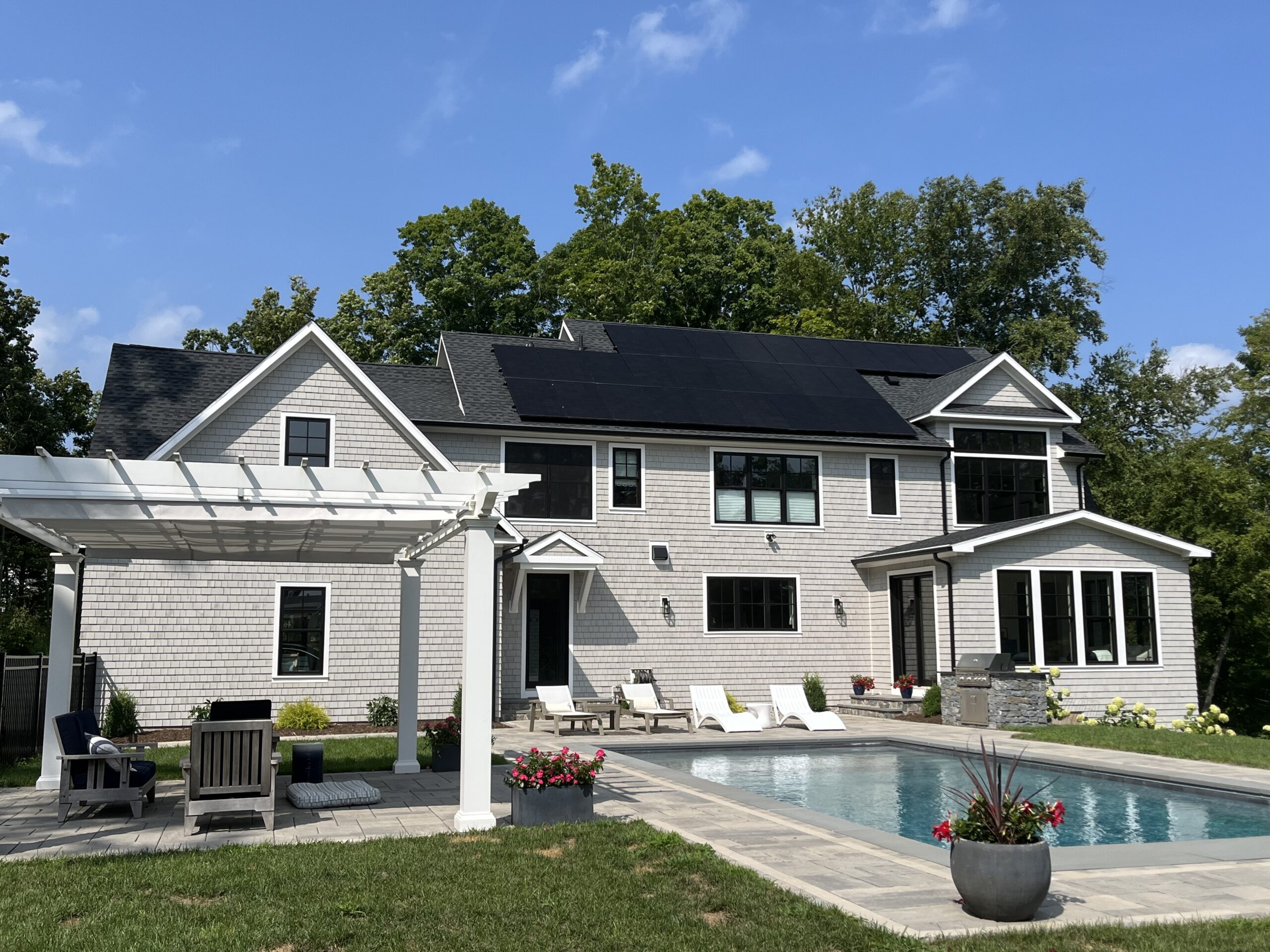
Solar: A Case Study Aug 2024
Solar: A Case Study Aug 2024
Solar energy isn’t suitable for every house or every homeowner, and over the years, I’ve heard a range of opinions on the matter. The investment needs to make sense based on factors like how long you plan to live in your home and the cost benefits. Many homeowners, including myself, don’t want to compromise the appearance of their property. Aesthetically pleasing installations, considering factors like roof pitch, color coordination, and overall design, are often preferred.
During our new construction process, we were committed to thorough research to determine if solar was a good fit for our forever home. I appreciate a well-designed solar array—it’s a positive feature, symbolizing energy efficiency and a commitment to reducing our carbon footprint. Plus, the prospect of a low (or even zero) monthly electric bill was enticing!
There are several ways to incorporate solar into your home energy plan: leasing, purchasing, financing, and choices about the number of panels, style, and placement. Experts evaluate these options and make recommendations based on your expectations and needs.
We oriented our new home to maximize solar exposure on the rear roof and selected a shingle color that complements the black panels. Our home has numerous electric features beyond just lights and appliances, including a heat pump, central air, clothes dryer, pool heater (sorry), and many work-from-home days.
The solar company, All Green It, provided a performance and financial analysis, and we hoped it would meet our expectations. We decided to purchase 27 panels with an anticipated annual production of 13,558 kWh. After the CT Green Bank incentives and federal rebates, the overall cost was $20,794.
The expected savings were calculated at $2,280 per year, covering 100% of our electricity needs, with a payback period of 8.2 years. This calculation included an anticipated average annual electricity rate increase of 3%. However, according to PURA, rates actually increased by 28% in the first half of 2024, and are now back down to less than 1% for the second half of the year—much higher than the anticipated 3% increase.
I’ve been waiting two years to write this blog. Our solar array was installed in the summer of 2022 when we moved into our new home. However, like many COVID-era construction projects, we faced a major supply chain delay and were unable to procure the required dual meter until July 2023. Now, after one year of data, I’m excited to report that we haven’t paid an electric bill since our solar system became active. Our actual electric usage/savings was $2829.04 – $549 more than predicted. Even with our AC running strong during this hot summer, our net metering “true-up” for December is currently $400, and I hope it will increase as we head into fall. The bottom line: we are currently outperforming the predictions! And with energy costs rising, I expect that to continue.